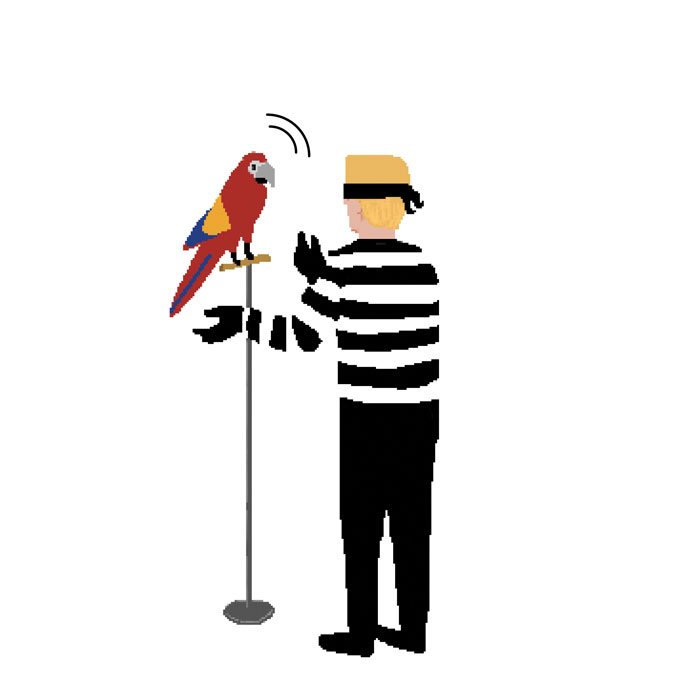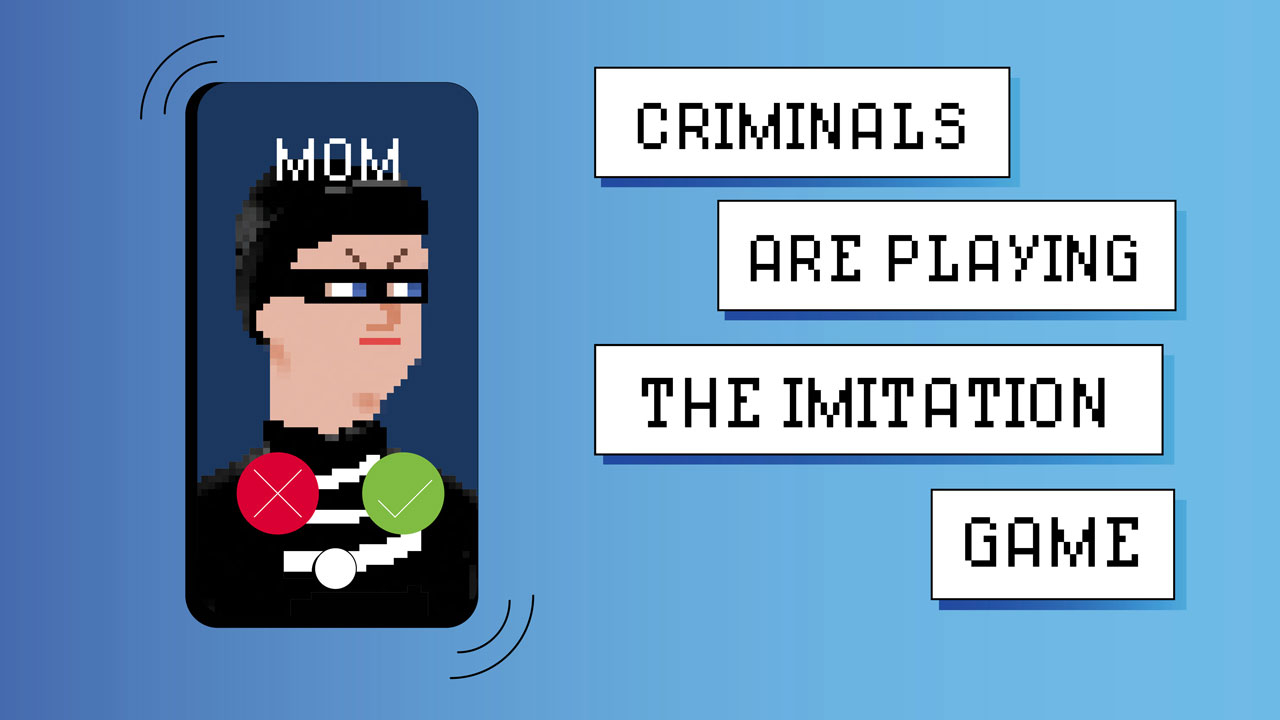Your mother answers the phone and is pleased to hear your familiar voice. But she soon grows concerned as you explain your predicament: You lost your wallet out of town. You don’t have any money or credit cards. You need her to wire cash, fast. Concerned for your well-being, mom quickly complies. But there is a problem: You weren’t talking with her. It was only the sound of your voice, used by a criminal to swindle her out of money.
What once was a science-fiction scenario is now a frightening reality, both online and off. “Artificial intelligence can now create fake voices that are so realistic, people can’t tell the difference,” says Nitesh Saxena, Ph.D. A professor in the UAB College of Arts and Sciences Department of Computer Science and the founding director of UAB’s Security and Privacy in Emerging Systems (SPIES) lab, he has made fake voices the focus of his research. He wants to understand the interplay of technology and biology that makes the trickery work. His findings could lay the groundwork for improved security measures to detect the fakes.

Crook got your tongue
“It’s no surprise that this is happening,” Saxena says. “We foresaw it 10 years ago.” Back then, it was a staple of suspense movies: The villain would break into a secure area by imitating someone’s voice electronically.
 Nitesh Saxena, Ph.D.
Nitesh Saxena, Ph.D.Now all it takes is someone recording a few seconds of your speech from a phone call, an audio clip posted on social media, a speech or presentation, or even a conversation in a restaurant or coffee shop, Saxena explains. Readily available technology can then manipulate and expand that fragment. For example, a Montreal-based company called Lyrebird promotes its ability to create a digital voice from a small audio sample.
“The attacker will speak, and the system is trained to translate the attacker’s voice into your voice,” Saxena says. Then “the attacker can speak any new sentences, and they will appear to be in your voice.”
Saxena’s research has indicated that such impersonations are more than 90 percent accurate and that most listeners cannot separate the actual voice from the imitation. In one study, he and his colleagues scanned brain signals and activity, looking for any differences as people listened to the voices and tried to distinguish between the real and fake ones. The researchers found none. “Our brains perceive fake voices as real,” Saxena says.
Could technology help us tell the difference? “The end goal is to see how susceptible human users are to these attacks, and hopefully gain enough insight from these studies that we can eventually build a voice biometric system that could be more resistant to these types of attacks,” Saxena says.

Sensing a scammer
Elsewhere in the Department of Computer Science, associate professor Ragib Hasan, Ph.D., is studying other forms of fakery that find us through our social-media feeds and phones.
 Ragib Hasan, Ph.D.
Ragib Hasan, Ph.D.Part of his research targets Twitter bots and similar software that send out fake social-media posts, tricking people into believing they are receiving factual information from a familiar or trusted source. Hasan and his team are looking for characteristics that identify bot activity and messages. The work is complex because bots continue to become more sophisticated. Hasan describes “an arms race between bot operators and the researchers and companies trying to stop them. As we develop new prevention techniques, bot operators are evolving to evade detection.”
One change from the bot makers illustrates their challenge: Instead of sending out several thousand tweets, which might raise suspicions, some fake accounts now limit themselves to fewer than 100, Hasan says. “But the bot operator might have a thousand such sleeper accounts that are used in this manner,” expanding the dissemination of fake messages and making the bots harder to identify.
Hasan also is studying ways to detect robocalls—a nuisance that often bedevils us multiple times a day. Many are scams attempting to trick people. Some ruses try to get you to believe you owe money to the IRS or to give up your Social Security number to keep it from being canceled.
The UAB researchers are gathering recordings and voice mails left by phone scammers to create an algorithm that would identify such calls in real time. “Then the next time someone calls and uses a similar script, we can identify it as a scam call, more than likely,” Hasan explains. “It’s similar to what we’re doing with tweets.
“One of my research goals is to create something like a ‘guardian angel’ for our digital activities,” Hasan says. “How can we bring safety and security to a person? How can we create an app that can watch over us and detect scammers who try to deceive us?”

A human problem
The task seems daunting, especially considering the rapid expansion of technological trickery. The rise of online “deepfake” videos, which swap faces and voices to seamlessly put words into people’s mouths, is “the biggest challenge,” Saxena says, because “it’s very hard for casual users to tell that they’re not real.” He plans to investigate the videos in addition to his audio research.
Hasan notes that technology has made these types of threats and deception more widespread, but the overall safety risk is nothing new. “I tell my students that security is not a technical problem. Security is a human problem,” he says. “Cavemen and Roman generals had security problems. This is not something that just came up with computers.”
With that in mind, “we must constantly evolve,” Hasan adds. “We need to look for new strategies and try to predict the criminals’ next move—and then create a solution that can prevent it.”

New scholarship powers high-tech success in Birmingham
By Brett Bralley
Kevin Mooney wants to work with artificial intelligence one day. Or perhaps create software for music producers. Either way, the UAB senior—a computer science major and music technology minor—is excited to explore his options. And as one of the first recipients of the Dora and Sanjay Singh Scholarship for Computer Science, he is free to do just that, he says. “Receiving this scholarship gives me the opportunity to focus on what I want to do in the future instead of having to worry about financial stuff,” explains Mooney, who is from Mobile, Alabama.
That’s why the Singhs established the scholarship, says Sanjay Singh, Ph.D., a Birmingham technology entrepreneur and a former faculty member in the Collat School of Business at UAB. “The surest pathway for success is the foundation of knowledge,” he explains. “For students who want to go to school but who don’t have the money, I want to help them see a pathway.”
Birmingham also benefits through the development of a diverse, skilled workforce ready to help fuel the economy’s growth, Singh adds. “You cannot build an entrepreneurial ecosystem without a strong computer science force.”
Singh and his wife, Dora, established the scholarship as part of UAB’s Blazing the Way Scholarship Match Initiative, which helps donors’ gifts go farther. Through the initiative, UAB matches, dollar for dollar, annual scholarships established by donors. For endowed scholarships, UAB provides the spendable portion of the payout for five years so that scholarships can be awarded immediately while the full pledge builds. Donors can name scholarships and establish additional criteria, such as need or participation in a particular course of study. The Singhs’ scholarship gives preference to students who graduated from Birmingham City Schools, minorities, and first-generation students.
Yuliang Zheng, Ph.D., chair of the Department of Computer Science, says the Singhs’ scholarship already has begun to pay dividends. With the support, students can “fully focus on learning the skills that will empower them to join the high-tech workforce to propel our region's economy to the next level.”


